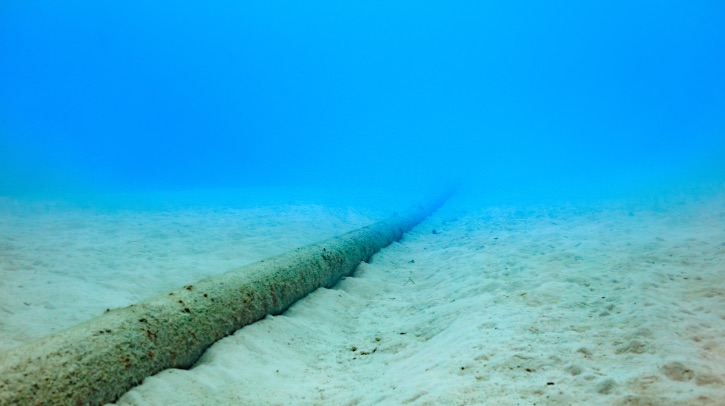Scientists from the National Physical Laboratory (NPL) and the Measurement Standards Laboratory (MSL) in New Zealand are set to carry out what they state to be the first ever optical interferometry-based earthquake sensing tests in the Pacific Ocean.
Optical interferometry-based earthquake sensing
By performing ultra-sensitive optical measurements, scientists from the two laboratories will “convert” a seafloor cable extending offshore New Zealand into an array of sensors for earthquakes and ocean currents. These tests are intended to lay the foundation for investigating the potential use of existing seafloor cables as detectors for tsunami early warning systems.
The technique was first used by NPL in 2021 and derived from techniques used for quantum science. It uses existing optical fiber infrastructure to gather continuous, real-time environmental data from the seabed. NPL previously demonstrated the technique in the Atlantic Ocean on a 5,860km-long intercontinental submarine optical fiber link between the UK and Canada.
As the Pacific Ocean is a highly seismically active area, the researchers found it provided an ideal test bed for advancing the technology and demonstrating its full potential. NPL and the MSL will test the technique later in 2024 on a section of the 3,876km-long Southern Cross Next cable on the floor of the Tasman Sea between New Zealand and Australia.
By applying NPL’s technique to a variety of seafloor cables, 1,000s of ocean-bottom sensors could be implemented.
Future applications
NPL’s sensing technique does not require any new hardware or infrastructure to be installed or any changes to existing infrastructure on the seafloor. Instead, it uses the optical fiber itself as the environmental sensor. NPL’s technique has the potential to provide an early warning system to safeguard coastal populations in the event of a tsunami. It also offers the first viable solution to fill the gap in data in ocean monitoring, with substantial impact in several scientific areas including seismology and oceanography.
Future projects could develop this concept into a worldwide monitoring network, giving earlier and more accurate detection of earthquakes and tsunamis, as well as advancing the world’s understanding of ocean floor geology and climate change through the long-term monitoring of seafloor temperature changes.
Intercontinental submarine partnership
Giuseppe Marra, principal scientist at NPL, said, “This exciting UK-NZ joint project will enable NPL’s pioneering seafloor cable-based environmental detection technique to be tested in one of the most seismically active regions of the world. This will significantly advance research on these innovative environmental sensing techniques, with impact on a number of science areas, from seismology to oceanography, as well as future societal applications, such as in early tsunami warning systems. This project is a testament to how science is capable of bringing together minds from the world’s antipodes to advance our knowledge of how our planet works and bring positive impact to society.”
Dr Peter Thompson, CEO of NPL, added, “This technology, pioneered at NPL, is the perfect example of how our science can create impact, delivering tangible benefits for society which will simultaneously improve our understanding of the world.”
The project is part of a new collaboration agreement with New Zealand announced on Tuesday, April 23, by Andrew Griffith, UK Minister of State for Science, Research and Innovation, at the Organisation for Economic Co-operation and Development’s (OECD) Committee for Science and Technology. Griffith said, “Bringing the UK and New Zealand’s brightest minds together, to overhaul how we give advance warning of tsunamis, could save scores of lives. This work proves the value of breakthrough technologies like quantum, as well as the international teamwork that’s crucial to harnessing them.”
Annette Koo, director and chief metrologist of the Measurement Standards Laboratory of New Zealand, said, “MSL is delighted to partner with NPL to bring this potentially powerful technology to the Pacific. It is another beautiful example of improvement in measurement giving us access to depths of information that in turn push the limits of our metrology. Not only that, but we see precision measurement underpinning our aspirations for a sustainable future. Our earliest timekeeping devices – calendars – allowed us to live according to the rhythms of our natural world. And now the next generation of clocks is unlocking a new richness of insight into our planet.”
“We are very excited to collaborate with NPL and MSL on this project,” said Dean Veverka, chief technical officer (CTO) of Southern Cross Cables. “Southern Cross has a proud history of supporting initiatives designed to benefit the Pacific Island communities, we are thrilled to continue this through the development of NPL’s technology and the first trial of this in the Pacific. The 45,000km of the Southern Cross cable ecosystem span the Pacific three times and once this technology is implemented the societal impact that early detection of seismic activity will have on the Pacific communities can be life-changing.”
In related news, the Kingdom of Tonga recently announced that it is further developing its early warning systems through the Tonga Mobile Applications Community MHEW and Response System (MACRES). Click here to read the full story.



